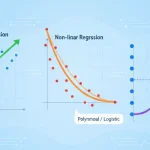The introduction of the Goods and Services Tax (GST) in India marked a historic shift in the country’s indirect taxation system. It aimed to bring about greater uniformity, transparency, and efficiency. However, as with any major tax reform, the implementation of GST brought several areas of legal and practical ambiguity. To address such uncertainties, particularly those that arise before a taxable transaction is undertaken, the GST regime introduced the concept of Advance Ruling. This mechanism aims to provide clarity and reduce the scope for disputes, offering taxpayers a legal opinion on specific tax-related questions before the transaction occurs. The rule of advance ruling in GST plays a crucial role in ensuring legal certainty and facilitating informed business decisions. For those seeking a deeper understanding of these rules, enrolling in a GST Course in Chennai can provide valuable insights into practical compliance, legal interpretation, and tax planning strategies under the GST framework.
Understanding Advance Ruling in GST
Under GST, the authority gives an advance ruling based on an application submitted by a taxpayer regarding the supply of goods or services, either proposed or already undertaken. It allows businesses and individuals to seek clarity on certain matters before they execute a transaction, ensuring that they remain compliant with GST laws. This concept is defined under Section 95 of the Central Goods and Services Tax (CGST) Act, 2017. Essentially, it is a proactive approach that helps applicants avoid future legal disputes by receiving a formal judgment from the tax authority on specific issues.
Purpose and Importance of Advance Ruling
The primary purpose of the advance ruling system is to bring certainty to taxpayers in relation to their tax liabilities and responsibilities. It acts as a proactive tool, enabling applicants to make well-informed decisions even in complex or unclear tax scenarios. By addressing doubts before transactions occur, it encourages voluntary compliance and helps minimize legal disputes. This, in turn, eases the burden on the judicial system and tax authorities by reducing unnecessary litigation. The system also enhances transparency in tax administration, compelling authorities to provide definite answers to legal queries. As India explores modern technologies such as Blockchain for GST Collection to improve accuracy and prevent tax evasion, mechanisms like advance ruling play a vital role in building trust between taxpayers and the system, ensuring that legal clarity evolves alongside technological advancements.
Scope and Applicability
Under the GST regime, advance ruling can be sought on a range of matters. These include the classification of goods or services, the applicability of a particular notification that may affect the rate of tax, the determination of the time and value of a supply, the eligibility for input tax credit, the requirement for GST registration, and the question of whether a specific transaction constitutes a supply of goods or services. The broad scope ensures that applicants can seek guidance on almost all crucial aspects of a taxable transaction. This is particularly useful for businesses entering new markets, introducing new products, or engaging in cross-border trade where tax treatment may be unclear.
Authorities Involved in Advance Ruling
Designated authorities manage the process of advance ruling under GST at different levels. The Authority for Advance Ruling (AAR) is the first-level authority that hears and decides on the applications filed by taxpayers. If the applicant or the concerned tax officer disagrees with the ruling, they can file an appeal with the Appellate Authority for Advance Ruling (AAAR). When authorities in different states issue conflicting rulings, the National Appellate Authority for Advance Ruling (NAAAR) steps in to resolve the dispute and provide a unified interpretation. This hierarchical structure ensures that there is a mechanism for reviewing and resolving disagreements.
Procedure and Timeline
The process of obtaining an advance ruling begins with the submission of an application in the prescribed format along with a nominal fee. The application must clearly state the issue for which the ruling is sought. Upon receiving the application, the authority evaluates whether the question is admissible under the scope of advance ruling. If the authority accepts the application, it schedules a hearing where the applicant presents arguments or evidence to support their case. The authority delivers its ruling within ninety days from the application date. Once issued, the ruling is binding on the applicant and the jurisdictional GST officer, provided the facts of the case remain unchanged. This time-bound nature of the ruling process ensures timely guidance for decision-making.
Legal Binding and Validity
One of the distinguishing features of advance ruling is its binding nature. The ruling is legally binding on both the applicant who has sought it and the jurisdictional officer who is responsible for assessing the taxpayer. This binding effect enhances the trust of businesses in the advance ruling mechanism, as it guarantees that the tax authority will adhere to the ruling while assessing the transaction in question. However, the ruling ceases to be binding if there is a change in law, facts, or circumstances surrounding the transaction. Moreover, if the applicant obtains the ruling through fraud, suppression of facts, or misrepresentation, the authorities declare the ruling void from the beginning.
Challenges and Limitations
Although the system intends advance rulings to bring certainty to tax-related decisions under GST, they sometimes fall short in practical application. One of the main issues is the inconsistency in rulings from different states on similar transactions, which creates confusion rather than clarity for businesses operating nationwide. Furthermore, the narrow range of questions that can be addressed through this system limits its overall usefulness. For many, the cost and time involved in appealing an unfavorable ruling can outweigh the benefits. In response to these challenges, professionals and business owners are increasingly turning to formal education to build confidence in interpreting GST rules. A training institute in Chennai can provide the necessary expertise and real-world context to understand better how advance rulings work, when to seek them, and how to manage disputes effectively.
The rule of advance ruling in GST is a forward-thinking provision designed to enhance transparency, predictability, and compliance in India’s tax system. It empowers businesses to seek official clarification on their tax obligations in advance, thus minimizing the risk of future disputes. By providing legally binding judgments, it serves as a shield against unnecessary litigation and helps taxpayers plan their transactions more effectively. While there are certain limitations, such as inconsistent rulings and limited scope, the overall benefits of the advance ruling mechanism far outweigh its drawbacks. As GST regulations evolve, businesses can expect the advance ruling process to offer stronger support in navigating complex taxation matters.






Recent Comments